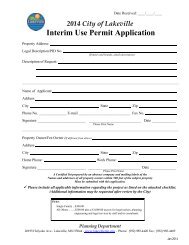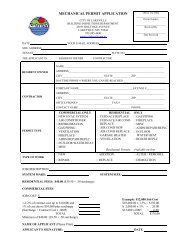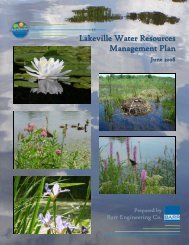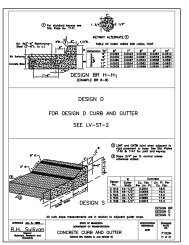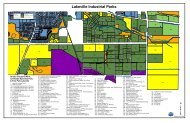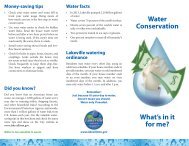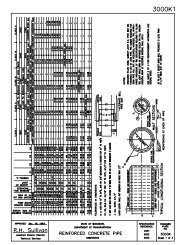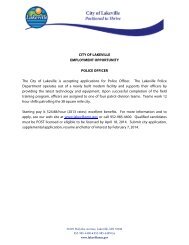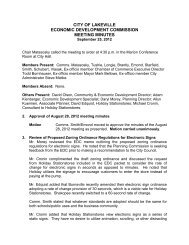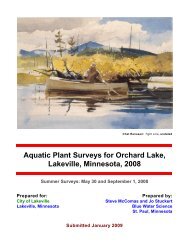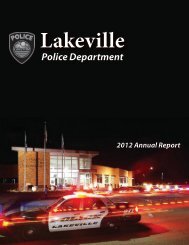2006 Parks, Trails and Open Space Plan - City of Lakeville
2006 Parks, Trails and Open Space Plan - City of Lakeville
2006 Parks, Trails and Open Space Plan - City of Lakeville
Create successful ePaper yourself
Turn your PDF publications into a flip-book with our unique Google optimized e-Paper software.
Limited passive recreation can be allowed within conservation areas provided that their<br />
use is compatible with the management <strong>and</strong> intent <strong>of</strong> the parcel. Such activities may<br />
include nature interpretation areas, hiking <strong>and</strong> biking trails, picnicking, <strong>and</strong> wildlife<br />
observation. Trail surfaces should be paved for maintenance with additional woodchip<br />
or aglime surfaces to allow for multi-seasonal use including cross-country skiing or<br />
snow shoeing. Active recreational uses should be limited from parcels with this<br />
classification except for low-impact activities such as walking, running, biking, cross<br />
country skiing, etc.<br />
Service Area:<br />
Per Capita St<strong>and</strong>ard:<br />
Desirable Size in Acres:<br />
Community-wide<br />
Not applicable<br />
Variable<br />
Primary Function/User Groups: Uses are limited to wildlife corridors, picnic areas,<br />
nature viewing, environmental education, interpretive<br />
areas, passive hiking or other trail modes consistent<br />
with resource preservation, conservation or specific<br />
management requirements necessary to maintain the<br />
area’s natural characteristics.<br />
Locational Characteristics:<br />
Typical Facilities:<br />
Conservation designations should be used in areas <strong>of</strong><br />
special environmental sensitivity including creek<br />
valleys, wetl<strong>and</strong>s, wetl<strong>and</strong> buffer areas, bogs, lake<br />
front views, unusual vegetation, storm drainage<br />
areas, retention ponds, st<strong>and</strong>s <strong>of</strong> significant trees or<br />
unique bluff areas.<br />
Developed facilities should be limited to elements<br />
compatible with resource preservation or<br />
management <strong>and</strong> may include passive trails,<br />
interpretive signing, controlled vehicle or trail access<br />
through signing.<br />
Special Uses <strong>Parks</strong>/Facilities<br />
Facilities which provide special activities, unique built environments or single purpose<br />
events fit in this classification. Their need should respond to distinct markets, dem<strong>and</strong>s<br />
or opportunities within the community. Characteristics vary widely in response to the<br />
facility, its site, <strong>and</strong> the dem<strong>and</strong> responded to.<br />
Service Area:<br />
Per Capita St<strong>and</strong>ard:<br />
Community-wide<br />
Variable<br />
<strong>City</strong> <strong>of</strong> <strong>Lakeville</strong>, Minnesota<br />
Chapter Three<br />
<strong>2006</strong> Comprehensive <strong>Parks</strong>, <strong>Trails</strong>, & <strong>Open</strong> <strong>Space</strong> <strong>Plan</strong> Page 41



